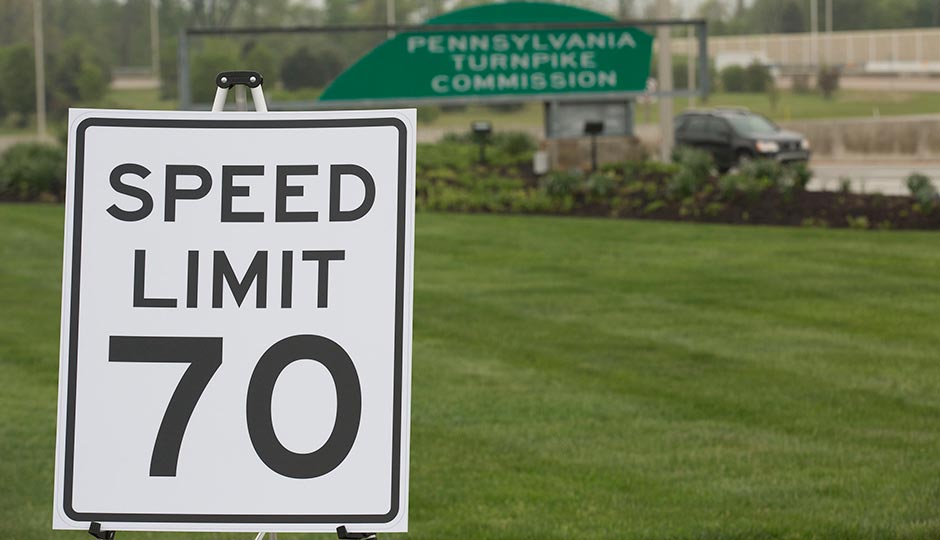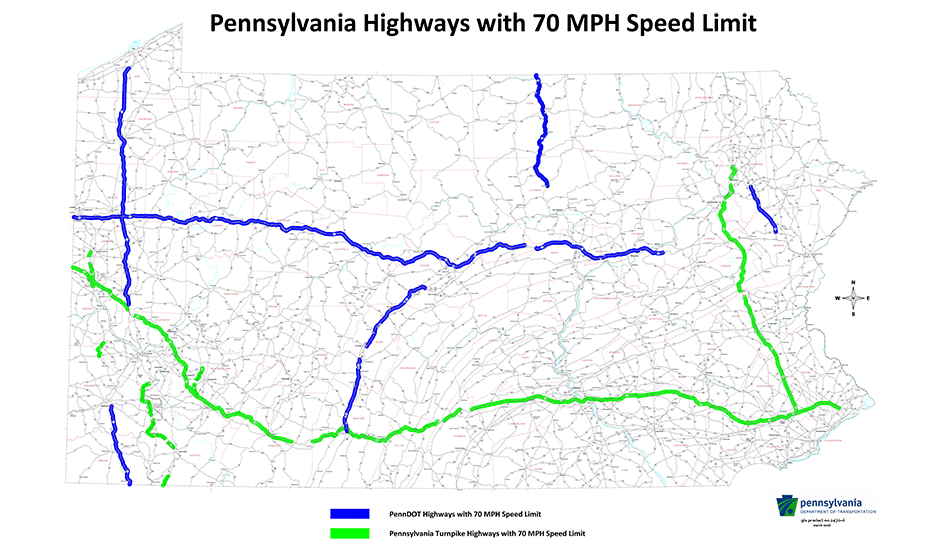Almost All of the Pennsylvania Turnpike Now Has a 70 MPH Speed Limit

Photo | Pa. Internet News Service
Gather ’round, children, for this tale of yore: Time was, the maximum speed for Pennsylvanians was 55 miles per hour. You’d head out in a Pontiac or a Saturn or an Oldsmobile, and cruise the interstate highways. But if you went more than 55 miles per hour, you were speeding.
Okay, it wasn’t really that long ago — even though those three makes of cars are long gone. But not only is the 55 miles per hour speed limit gone from Pennsylvania, you don’t even have to drive 65 miles per hour on some roads. After a successful pilot program, the Pennsylvania Department of Transportation announced today that the speed limit has been raised to 70 miles per hour on most of the Pennsylvania Turnpike.
“Before moving ahead, we looked very closely at a number of factors, such as speed and traffic data and the physical characteristics of the highways, in deciding where 70 mph limits could be safely permitted,” PennDOT Secretary Leslie S. Richards said in a release.

Map via PennDOT
On Tuesday, crews will begin replacing 65 mph signs with 70 mph ones, installing additional 70 mph signs and putting up warning signs before the remaining areas where the speed limit drops from 70 mph to 55 mph. The remaining 55 mph sections on the PA Turnpike are between Bensalem and the end of the turnpike, the eastern slope of the Allegheny Mountain, the turnpike’s five tunnels and “mainline” toll plazas that stretch across barrier lanes (Mid County, for example). Work zones will also have a 55 mph speed limit; tunnels will have a 40 mph speed limit during maintenance.
Act 89 of 2013, the highway transportation funding bill, allowed for the speed limit to be raised to 70 mph after safety studies were done and approved. PennDOT says it raised the limits to 70 mph in selected locations of the Turnpike, Interstate 80 and Interstate 380 in August 2014, and that no significant increase in crashes was found.
“Motorists should not look at this change as consent to speed; in fact, it’s as vital as ever to drive sensibly, to avoid distractions and to buckle up,” PA Turnpike Chairman Sean Logan said. “And remember, 70 mph — or any posted speed limit for that matter — is the maximum speed; you should drive slower when traffic, weather or road conditions demand it.”
Some researchers have concerns about rising speed limits across the country. (The federal government repealed the law setting a 55 mph maximum speed limit partially in the 1980s, then fully in 1995.) The Insurance Institute for Highway Safety told the Reading Eagle “fatalities would rise about 8 percent” if the speed limit were increased from 65 mph to 70 mph.
The Pennsylvania Turnpike Commission says it actually saw a small decrease in crashes in areas with the 70 mph limit, and no increase in fatalities.
Follow @dhm on Twitter.


